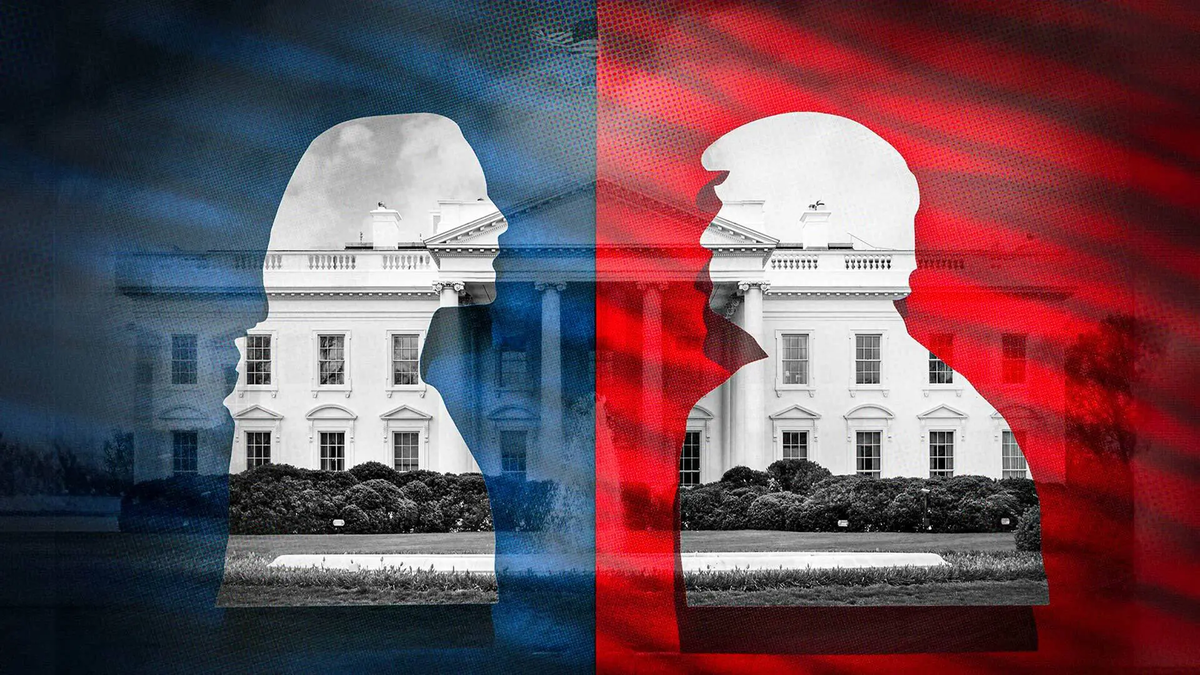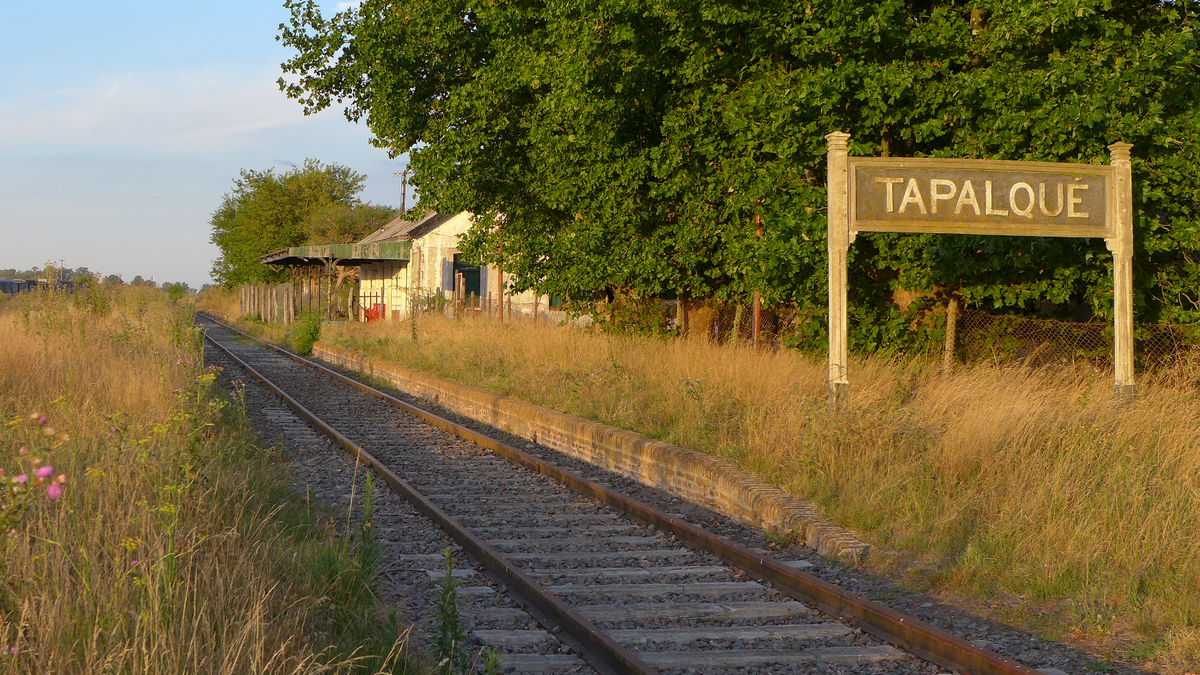In a week the US will have a new president and there is no need to clarify what this will mean for Americans and the world. Fortune tellers, octopuses, coins, whirligigs, there are countless instruments that are used to predict who will occupy the White House starting next January 20. The two main social mechanisms to try to guess if we will have – for the first time – a “Mrs. President” or a “Mr. President”, are the polls and the results of the betting houses. Starting today and twice a day, Ámbito.com will publish the main results – without adding any opinion – so that readers are aware of the most probable results and can thus form their decisions with the best information.
The surveys
The political failure of individual pollsters is proverbial; However, in the aggregate the surveys have been much more accurate. This does not mean that survey aggregators are free of bias (via the weight they give to different results and consultants).
In 2002, Real Clear Politics became the first North American poll aggregator, being recognized based on its results for the 2004 election, and in 2008 it was followed by FiveThirtyEight, which since last year has been – through abcNews – under the control of “ The Walt Disney Co.”
Based on its historical predictions, we could say that RCP has presented a bias towards the center right (Republicans) and 5.38 towards the center left (Democrats).
One point to keep in mind is that in the US there is no “election ban”, so we will continue to provide this information until the moment of the elections.
CPR Survey November 4 M.JPG
Surveys 5.38 November 4 M.JPG
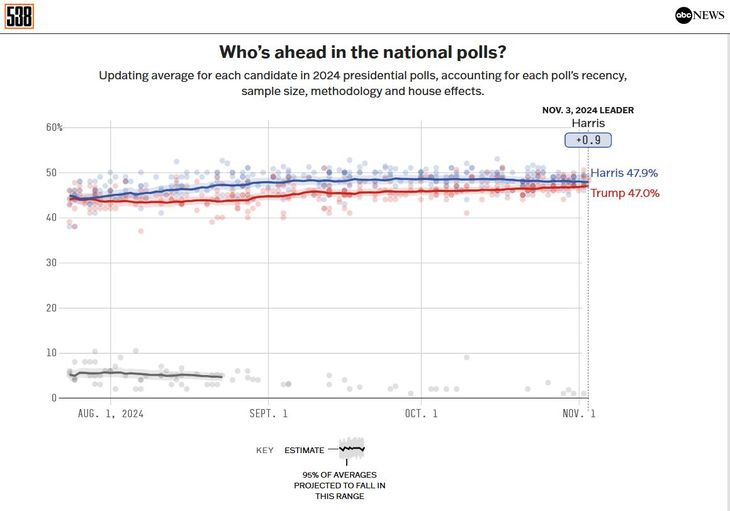
The Bets
Given the failure of the pollsters, at the beginning of the century the academic world began to see how the “wisdom of the masses”, collected by betting houses, provided better results than traditional pollsters, especially when the elections were very close. Below, the latest figures from the betting houses according to RCP.
Bets 4 11 M.JPG
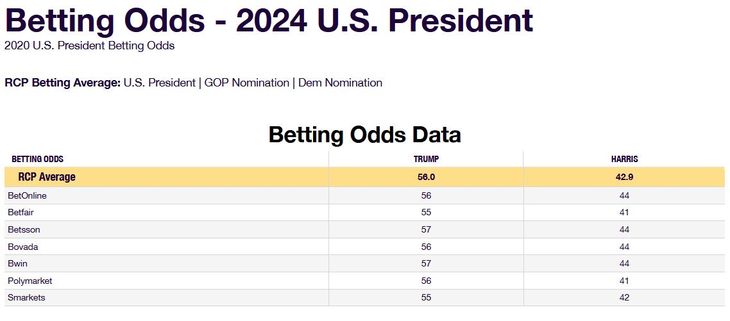
Grafdico Betting November 4 M.JPG
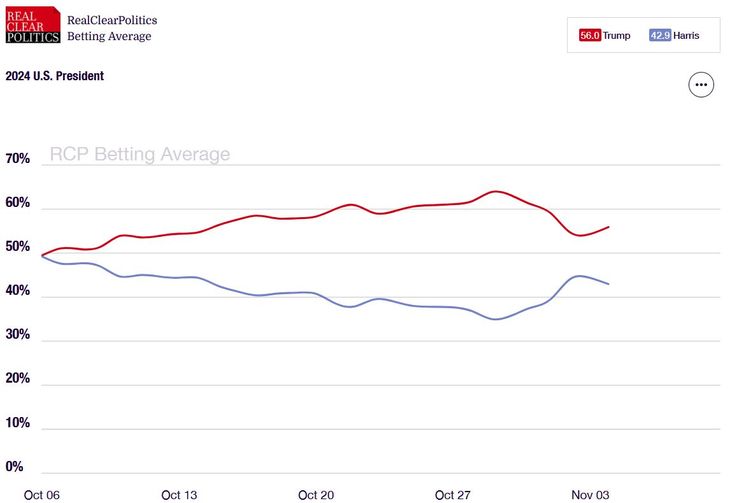
The Models
In addition to surveys and bets, there are countless institutions that have developed their own models, collecting countless data and probabilistic algorithms, seeking to predict who will be the next North American president.
One of the best known is the one published by the people of “The Economist”, a medium that is difficult to define as related to Donald Trump.
The Economist.JPG
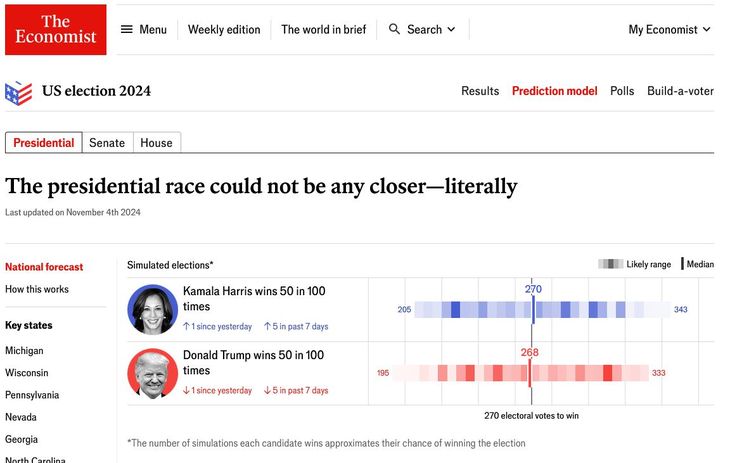
What happened since yesterday
Since yesterday afternoon’s comment, the bets in favor of Donald Trump have grown again after having been reduced almost uninterruptedly for at least seven days (+2.4 percentage points, raising his chance of winning to 56%), a the same as those of Kamala Harris fell (to 42.9%).
The people from the poll aggregators reduced the spread between the candidates to the minimum in weeks, those from RCP increased the Democrat’s chance, placing her just one tenth below her opponent who did not suffer changes (48.4% to 48.5%). , while those of “5.38” raised the Republican by one tenth and lowered her by the same amount, with which the difference remains at the minimum since the end of July (47% to 47.9%).
In this “lowering the candles”, those of “The Economist” placed the candidates with a 50% chance of winning, although they assigned Kamala two more electors in the electoral college.
As of this writing, the Electoral Laboratory at the University of Florida counted 32.5 million people who had sent their vote by mail and 36.5 million who had voted in person in advance (do you want me to tell you that the Yankee electoral system is a mess? ), that is, 78,003,222 people have already voted early, this is almost half of all those expected to vote (in 2020, at this point there had been 101 million, 69% -remember: COVID-; in the 2022 midterm, 44 million or 49.8% of the total)
When will we have “President?”
Officially, if all goes well, on September 17, the 100 senators (two from each state), 3 electors for the District of Columbia (Washington DC) and the 435 elected representatives, will appoint the new president by simple majority (270 votes) American. On January 6, under the command of Vice President Harris, the new Congress is formed and the votes are counted, officially designating the new president who will take office on January 20.
Of course, most likely you won’t have to wait until then. The “Swing States”, the key states, due to the number of voters they contribute and the level of uncertainty, begin to close at five in the afternoon (Georgia) and end at eight at night (Nevada). Argentina so tomorrow we could find out who the North American boss is (in 1836, 1968, 1972 and 2016 there were voters who “betrayed” the official candidate, but did not change the result of the election).
We had an example of this in 2012 when the media – usually CNN is the one that rushes the most – crowned Barak Obama before midnight (10pm; Argentina). But in 2016, with Donald Trump, we had to wait until three in the morning (one in the morning). In 2020 things got complicated and it took four days to find out that Joe Biden was heading the executive branch. In 2000 it was even more difficult and it was not until December 12 that the Supreme Court declared George Bush president (solving the Florida mess).
This year, things promise not to be easy, so you have to be prepared for anything.
Who will have the power?
While all eyes are on what happens in the seven key states, the important thing is what happens in Congress.
With the parity we see until today, it is risky to predict who will be chosen as the new president. But the outlook for the future of the legislative branch seems much clearer.
In the US, the 435 members of the House (the Lower House, the deputies) are elected in their entirety every two years, while a third of the 100 senators are renewed, who remain in office for six years.
If the numbers in California and New York work, it is very likely that the Democrats will regain the majority in the Lower House, while the distribution of the elections would make it easier for the Republicans to take back the Senate. But it would be a somewhat more centrist House than the current one, and a Senate more to the right. If so, whoever the new president is, he will not have an easy time in the perennial negotiations he will have with Congress, especially if the winner is Harris, who would not be able to promote any of the major reforms he seeks in the judicial branch.
See you in the afternoon
Source: Ambito
I am a 24-year-old writer and journalist who has been working in the news industry for the past two years. I write primarily about market news, so if you’re looking for insights into what’s going on in the stock market or economic indicators, you’ve come to the right place. I also dabble in writing articles on lifestyle trends and pop culture news.

